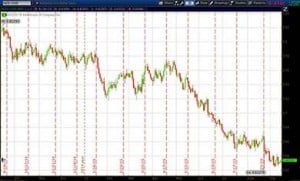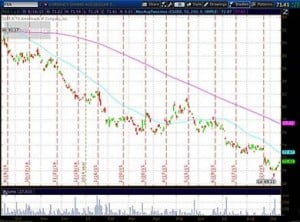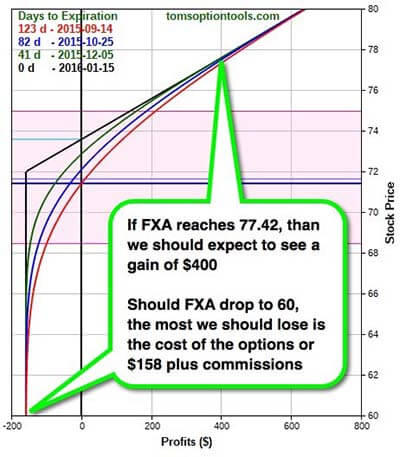So, the Fed's going to wait to hike interest rates. That suits us just fine. Even if they had raised rates yesterday, it would still be way down on the list of risks we face right now.
At the top of that list, though, are what I've called the "Three Cs" of risk in this market: China, commodities, and currencies.
We've watched it start with China and cascade down through the currencies of those countries that have broad exposure to the Chinese economy - and the huge quantities of commodities that China's juggernaut economy consumes.
But that domino effect of risk and volatility is opening up a big opportunity on the other side of the world.
That's where the smart money is headed - and I'm going to show you the best way to profit from this shift...
Australia and New Zealand Are in This Together

Click to Enlarge
Australia, New Zealand, and Canada have all seen their economies slowing in the last year. It really shows in the collective plunge their currencies have taken.
While Canada has seen the loonie drop nearly 19% to the U.S. dollar, Australia and New Zealand have taken the brunt of the global slowdown.
Australia has seen the Aussie drop 22% in the last year. New Zealand's kiwi has had the biggest drop of the three, trading 23% lower than the U.S. dollar during the past year.
I'm convinced that these slumps will continue for as long as resources and commodities stay depressed.
But I'm equally convinced that the worst of these drops will soon be over.
Fortunately for us, there's a way to play our short-term bearish and long-term bearish convictions...
Here's Our Best Australian Dollar Play

Click to Enlarge
It's called the Guggenheim CurrencyShares Australian Dollar ETF (NYSE Arca: FXA).
It's one of my favorites because it gives traders a way of buying the Australian dollar without having a futures or FX account. In fact, FXA can be traded right in an equity account and closely tracks the movements of the Australian dollar.
Currently, FXA is trading just off yearly lows at about $71.41. Simply buying 100 shares at the current price will cost you about $7,141 plus commissions.
Now with a cash transaction, you have no leverage - and with such furious volatility in the currency markets, that's probably a good thing. So let's base our long-term target on the 200-day moving average at $77.42.
- Buy 100 shares of FXA at $71.41 plus commissions
- Cost and Maximum Risk: $7,141
- Projected Reward at Target: $501 or 8% return on investment (ROI)
Now one more step here will minimize the risk and give you a chance for an even bigger gain...
Lower Your Risk, Boost Your Reward
First, there's very little chance that the Australian dollar will go down to zero.
But there is risk to the downside... Could FXA drop to, say, $60?
Absolutely. If we put a stop-loss in at $60, that's still a projected risk of $1,141.
We can do even better with this options play, though...
The FXA Jan 2016 $72 calls (FXA160115C00072000) right now will cost you $158 plus commissions - that's considerably less than $7,141.
Here's the target and risk profile. I'll give you a hint: It's mighty attractive...
This graph represents buying the January 2016 calls with a strike price of $72, paying $158 a contract.
If FXA were to get to $77.42 (our target from above), then the $72 calls should fetch a profit of about $400. This would represent a return on investment of over 250%. That's far better than the 8% return from buying the shares - and far better than the risk associated from it as well.
And here's some extra credit for those of you who want it: If I want to buy some real estate down under on the coast and pay for it over time in the local currency, what's the best way to hedge my currency risk? Let me know your answer to this question in the comment section below!
Tom is currently showing his Power Profit Trades readers how to make a 100% return in just 30 days on the small movements of one of the biggest, most valuable companies in America. Click here to join them - you'll get this high-profit strategy and new recommendations each week at no charge.
Join the conversation! Follow Tom on Twitter and Facebook.
About the Author
Tom Gentile, options trading specialist for Money Map Press, is widely known as America's No. 1 Pattern Trader thanks to his nearly 30 years of experience spotting lucrative patterns in options trading. Tom has taught over 300,000 traders his option trading secrets in a variety of settings, including seminars and workshops. He's also a bestselling author of eight books and training courses.





